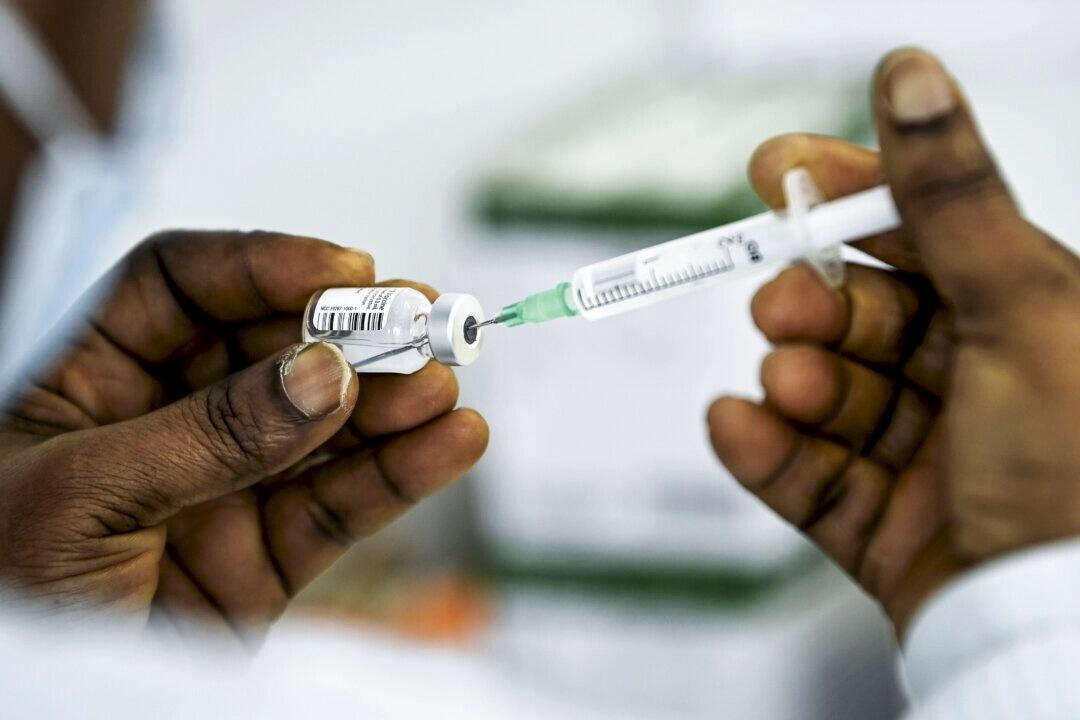UN Says Global Child Vaccination Rates Below Pre-Pandemic Levels
Authored by Jack Phillips via The Epoch Times,
Childhood vaccination rates stalled worldwide in 2023, the United Nations said in a new report, finding that some 2.7 million more children haven’t received vaccines as compared to before the COVID-19 pandemic.
A report by the World Health Organization (WHO) and the U.N. Children’s Fund (UNICEF) issued on July 15 focused on vaccines targeting measles, as well as other illnesses targeted by childhood vaccines such as diphtheria, tetanus, and pertussis—also known as whooping cough.
Last year, some 84 percent of all children surveyed, or 108 million, received three doses of the diphtheria, tetanus, and pertussis (DTAP) vaccine, according to the WHO and UNICEF. The 2023 rate was the same as the 2022 vaccination rate, the U.N. agencies stated, noting that the DTAP vaccination rate was 86 percent in 2019, a year before the pandemic started.
The report found that the number of children who haven’t received a single dose of the DTAP vaccine, also known as DTP or DTP3, rose by 600,000 from 2022 to 2023, or an increase to 14.5 million from 13.9 million in 2022.
Aside from those figures, about 6.5 million children worldwide didn’t receive a third dose of the DTAP vaccine, which the U.N. agencies say is “necessary to achieve disease protection” as an infant or a young child.
Other than its DTAP findings, the U.N. agencies also stated that vaccination rates for measles “stalled” in 2023, leaving about 35 million children worldwide with “no or only partial protection.”
About 83 percent of children around the world got their first measles vaccine in 2023 via routine health services, while the percentage of children getting a second measles vaccine dose was 74 percent last year, according to the U.N. agencies.
“These figures fall short of the 95 percent coverage needed to prevent outbreaks, avert unnecessary disease and deaths, and achieve measles elimination goals,” the WHO said in a statement.
Measles outbreaks have emerged in more than 103 countries over the past five years, the agencies noted, stating that “low vaccine coverage” of 80 percent or less was a “major factor.” Ninety-one countries that have more vaccine coverage didn’t report outbreaks of measles over the past five years, it found.
The Centers for Disease Control and Prevention (CDC) earlier this year sent out a health alert over an increase in measles cases worldwide. It advised that American citizens traveling overseas “should be current” on their measles, mumps, and rubella, or MMR, vaccinations.
“Many countries, including travel destinations such as Austria, the Philippines, Romania, and the United Kingdom, are experiencing measles outbreaks,” the agency stated at the time.
In the United States, a significant portion of measles cases reported so far in 2024 have been connected to an illegal migrant shelter in Chicago, according to the CDC. Some 57 out of 167 cases reported in the United States this year are associated with the shelter, it stated.
War-hit countries in particular saw a big jump in the number of children who weren’t immunized in 2023, officials with the two U.N. agencies said at a press conference last week, ahead of releasing the data.
“As conflicts continue to impact children around the region, Sudan, Yemen, and Syria are home to nearly 87 percent of the total zero-dose children in the region, with Sudan alone contributing 42 percent of these zero-dose children,” UNICEF said in a statement, noting that in Gaza and the West Bank, the “impact of the conflict has already started to show” on vaccination rates.
The U.N. agencies stated that there were some positives. For example, there were about 600,000 fewer “zero dose” children across the African region in 2023 than in 2022, and coverage of the HPV vaccine, which protects against cervical cancer, also improved globally. Ukraine also saw an improvement in vaccinations amid its war with Russia, officials said.
NEVER MISS THE NEWS THAT MATTERS MOST
ZEROHEDGE DIRECTLY TO YOUR INBOX
Receive a daily recap featuring a curated list of must-read stories.



